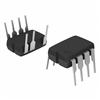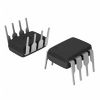NCP1207: Features: • Free−Running Borderline/Critical Mode Quasi−Resonant Operation• Current−Mode with Adjustable Skip−Cycle Capability• No Auxiliary Winding VCC Ope...
floor Price/Ceiling Price
- Part Number:
- NCP1207
- Supply Ability:
- 5000
Price Break
- Qty
- 1~5000
- Unit Price
- Negotiable
- Processing time
- 15 Days
SeekIC Buyer Protection PLUS - newly updated for 2013!
- Escrow Protection.
- Guaranteed refunds.
- Secure payments.
- Learn more >>
Month Sales
268 Transactions
Payment Methods
All payment methods are secure and covered by SeekIC Buyer Protection PLUS.

 NCP1207 Data Sheet
NCP1207 Data Sheet







